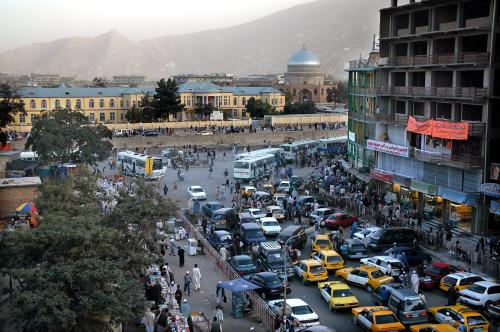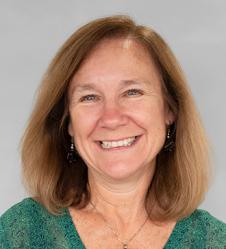On May 3, 2023, the Brookings Center for Sustainable Development hosted a public event on the recently released USAID Policy Framework. USAID Deputy Administrator Isobel Coleman presented the highlights, followed by a panel representing USAID and civil society discussing specific aspects of the framework.
Generating a conversation around USAID’s roles and objectives as articulated in the Policy Framework could not be more timely in this era of growing development and geopolitical challenges.
The Policy Framework brings together principal USAID policies, objectives, and priorities for the Biden administration. It is informed by and balances a range of aspects of the USAID landscape—USAID’s history and experience in nurturing development; global trends; U.S. national security and foreign policy interests; USAID’s role within the panoply of U.S. foreign assistance agencies.
Roadmap
The framework identifies five key priorities:
- Respond to complex emergencies, building peace and resilience, and food security.
- Address climate change.
- Stem authoritarianism and support democratic reformers.
- Bolster health security.
- Advance inclusive economic growth.
It serves as a roadmap for USAID staff, other U.S. government agencies, partners, and the broader development community. Developed in a collaborative manner, the Policy Framework’s challenge now is execution.
Not stated as such, the document highlights the pursuit of equally important cross-cutting issues. These include:
- Transferring ownership to local stakeholders.
- Engaging the private sector and new partners.
- Reducing the burden of the bureaucracy on staff and partners.
- Analyzing development through a gender lens, as well as the roles and rights of underserved populations, specifically youth, LGBTQI+, indigenous, and disabled populations.
- Advancing diversity, equity, inclusion, and accessibility in USAID’s work force.
The fact that USAID is mandated to advance these and other objectives reveals both why the agency has so many rules, regulations, and procedures, and the urgency in executing its burden-reduction initiative to make the agency nimble and open to partnering.
Localization
Localization was a principal topic of discussion among the panelists and with the audience. One example of USAID executing the subtitle of the policy framework—driving progress beyond programs—was the use of its voice and leadership to bring 14 bilateral donors to commit to locally led development.
A number of issues around localization remain unclear. With so many burdensome regulations, how will power actually shift to local stakeholders? How much power will be transferred? How will USAID respond when localization conflicts with core U.S. interests and values? These are just a few of the challenges of intermixing foreign policy with development objectives. For example, if the U.S. walks away from a fraught environment, does that leave the playing field to China and Russia?
Another unresolved issue is the definition of local. Deputy Administrator Coleman reported that the proportion of USAID funding that goes to local organizations increased from 7.4 percent in 2021 to 10.2 percent in 2022, a step toward the goal of 25 percent by 2025 (confirmed by the just released report on localization, Moving Toward a Model of Locally Led Development). Some international civil society organizations asserted that their affiliates located in developing countries should not be included. During the Brookings event, Publish What You Fund questioned the exclusion of project funding through U.N. organizations which, if just 25 percent were redirected to local organizations, would provide an additional $840 million per year of local funding opportunities. USAID Forward—a previous incarnation of the Policy Framework—counted assistance to trust funds administered through host country governments in its assessment of progress.
The confusion created by differing definitions of local and what funding should be included in the calculation must be resolved. Assistant to the Administrator Michele Sumilas noted the Development Assistance Committee at the OECD is addressing the issues of definition and metrics for localization. But time is of the essence to ensure USAID’s effort to shift power does not stall or fall by the wayside if there is a change in administration in 18 months.
On the elements that are in dispute, we believe the definition should include government-to-government assistance, funding to international organizations that goes to local organizations, and funding to local affiliates if they are truly 100-percent-local and decisions are driven by locally determined priorities, design, and implementation.
Partnerships
The concept of operating in a partnership mode is a thread throughout the policy framework, from a commitment to expanding work with the private sector and local entities, to elevating the practice of development diplomacy which requires facilitating “new relationships that foster new productive partnerships (page 25),” to partnering being embedded in each of the objectives.
If the agency is to adopt these business practices, it must act with speed and agility to respond to opportunities in often challenging local environments. Carrying through with the commitment to “shift how we work (page 43)” requires strong relationships with the Congress to enable USAID to move fast and implement the Burden Reduction Program (highlighted in the policy framework) and New Partnership Initiative, both designed to eliminate unnecessary procedures and requirements on staff and partners.
It also requires USAID to institute incentives to reward staff for collaborating within and outside the United States government, as well as for taking risks. It requires the Department of State, the National Security Council, and Congress to seriously consider whether demands and requirements they put on USAID contribute to advancing U.S. interests in development.
The case for partnering is evident in USAID’s role in the Global Partnership for Infrastructure and Investment, as implementation would be facilitated by joining USAID’s expertise in technical assistance and improving a country’s enabling environment with the Development Finance Corporation’s (DFC) experience with the private sector, and with the resources of G-7 countries to address infrastructure needs. However, the jury is still out as to whether the administration can execute the vision.
SDGs
The introduction to the Policy Framework “recommits” to Agenda 2030. Deputy Administrator Coleman noted the important conclusion of the recent Brookings publication “The SDG second half: Ideas for doing things differently” that the world has not been doing enough differently to be on course for SDG success. Assistant to the Administrator Michele Sumilas asserted that, although not specified in the Policy Framework, “[we] are focused on achieving the SDGs” and working with interagency partners to put forward real commitments around the SDGs for the U.N. SDG Summit in September.
Commitment is not action. Like other major donors, the U.S. should embed the SDGs in its policies and programs. The DFC provides a model in recently identifying SDG-aligned impact theses for its priority sectors and cross-cutting initiatives. In anticipation of the September U.N. SDG Summit, the U.S. should commit to and begin drafting a voluntary national review (VNR).
Workforce
The inadequacy of staff numbers and training for implementing the Policy Framework came up several times in the discussion. USAID’s workforce was reduced by 30 percent during the 1990s. In the past decade, program funding has nearly doubled while staffing increased only marginally. In 2011 the ratio of staff to funding was just over $5 million per staff person; in 2021 that had increased to $7.2 million. Even with the proposed staff increase in FY 2024 budget request, the ratio would move up further to $8.3 million.
The new report on localization references recent hirings in the critical acquisition and assistance function. Congress has taken a piecemeal approach to this shortfall by allowing a few select programs to use program funds to hire staff. It could take further steps by expanding this authority to all programs, as Michele Sumilas proposed in congressional testimony earlier this year. It could allow program funds to be used for local staffing for localization programs. A more permanent fix would be to shift USAID to the practice followed by most agencies to fund workforce from program funds rather than a separate operating expense account. Long-term, to meet today’s geopolitical environment, USAID should engage the National Academy of Public Administration to draft a 21st-century workforce plan for the agency, informed by the American Diplomacy Project at the University of Arizona.
USAID’s focus on diversity, equity, inclusion, and accessibility in the framework and the FY 24 budget request are ambitious objectives to diversify USAID’s workforce and make it more representative of America. Administrator Power and her team should be applauded for this historic shift. The reach should be broadened to instill and track inclusive development in implementing USAID programs and to adequately staff the new Inclusive Development Hub, as well as agency and mission staff with lived experience from underrepresented communities.
Conclusion
USAID was created in 1961 at the height of the Cold War by President Kennedy as a key instrument of national power. With the end of the Cold War, USAID enjoyed a brief post-Cold War decade of development. That period was cut short by 9/11, with the war on terror imposing enormous challenges for USAID as it led huge programs in Iraq, Afghanistan, and Pakistan. Now with the Russian invasion of Ukraine and the rising global challenge of China, greater attention is being directed to foreign policy and security. The conversation at the event broached the issue of the role of development in the intensifying geopolitical atmosphere, a discussion that must lead to policy and organizational decisions to ensure that USAID and other U.S. government agencies have the ability and space to advance long-term development in an increasingly transactional environment.







Commentary
USAID’s Policy Framework
June 15, 2023